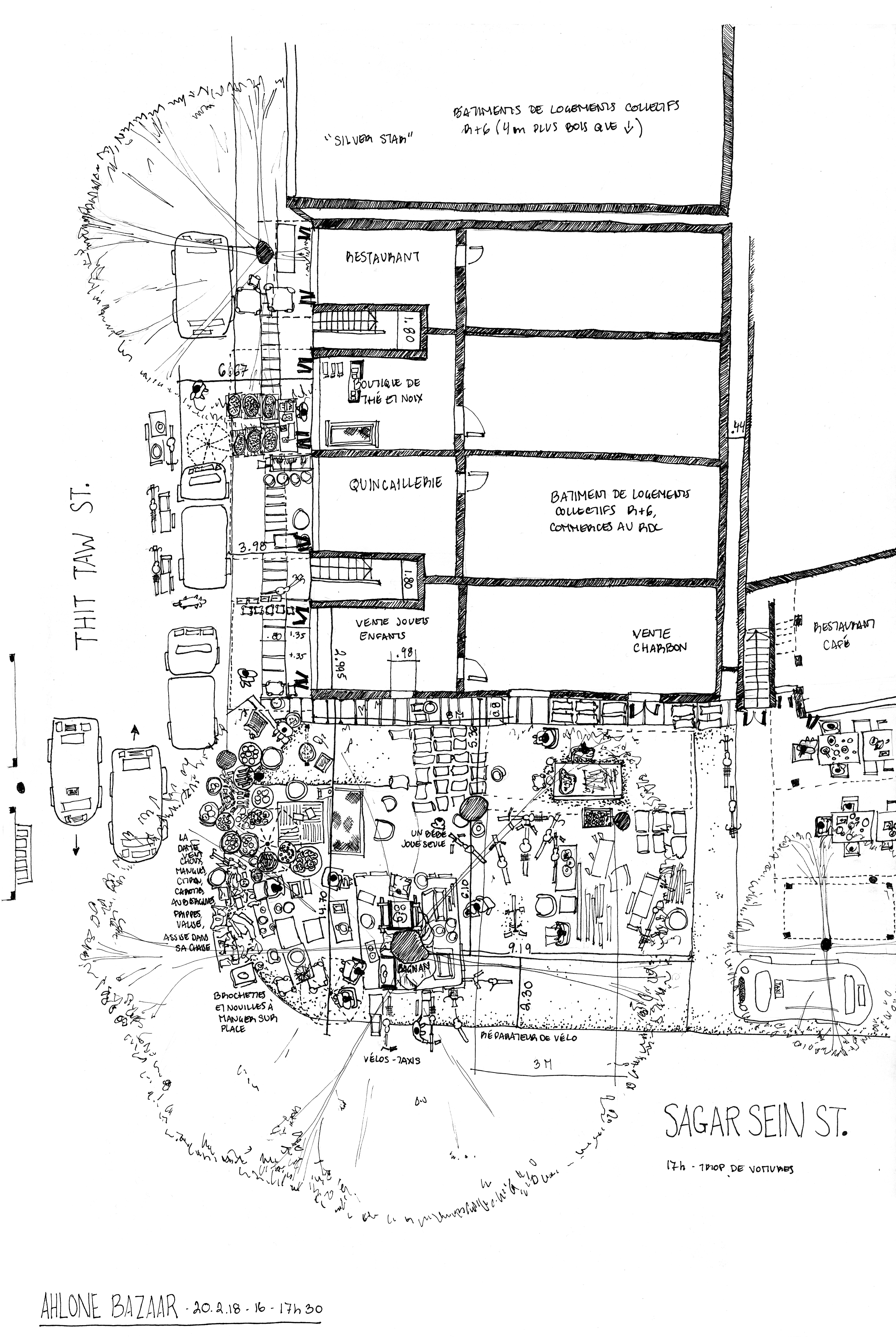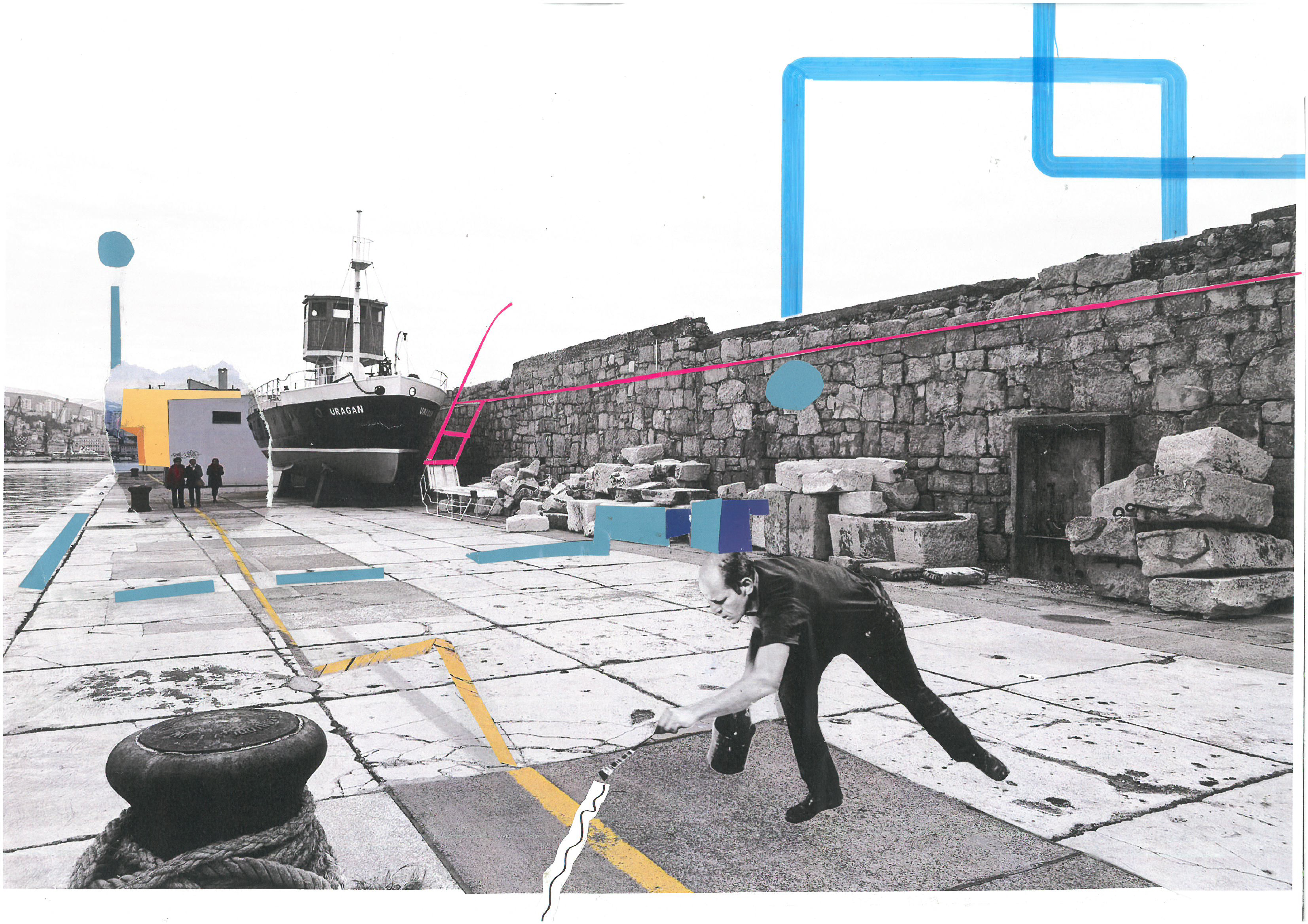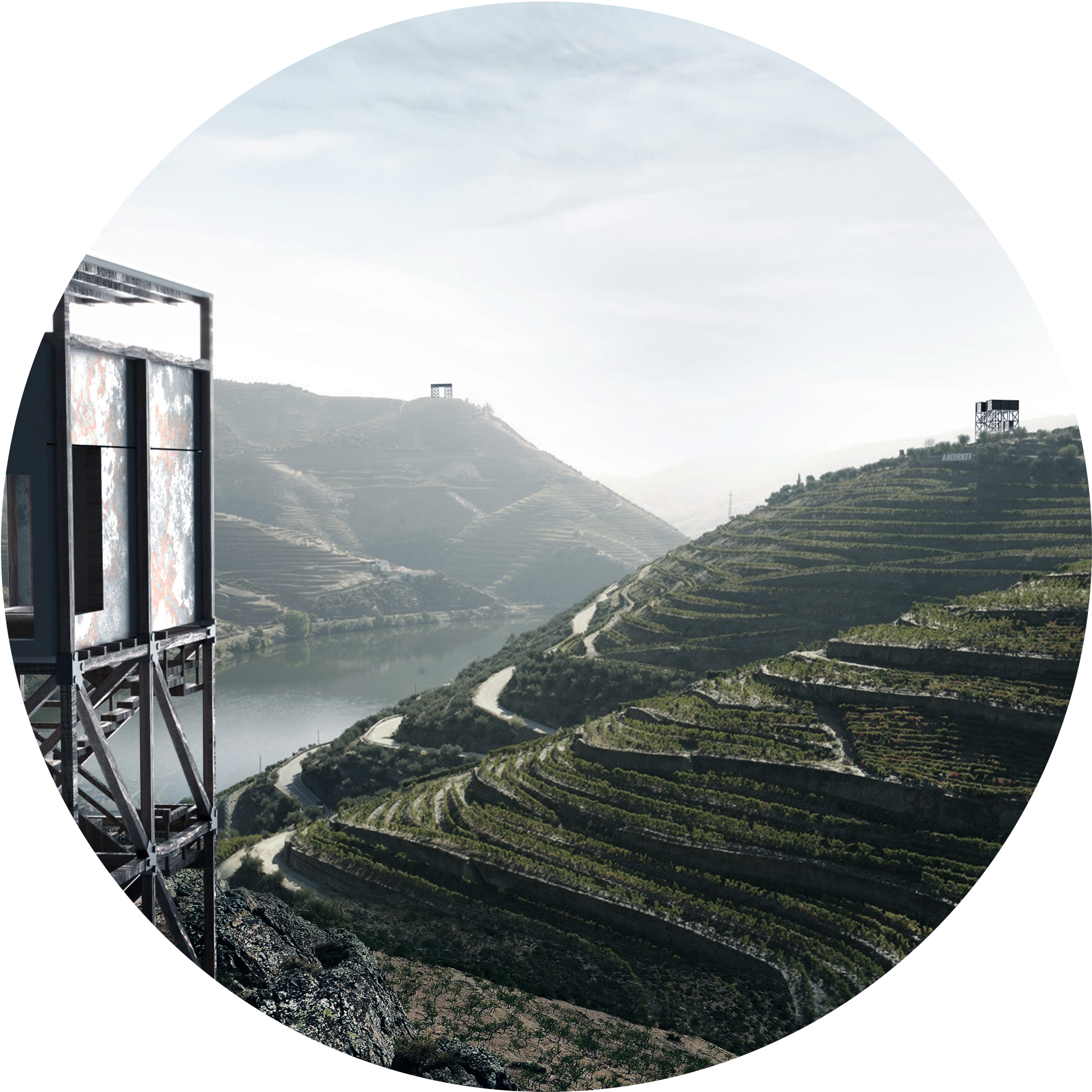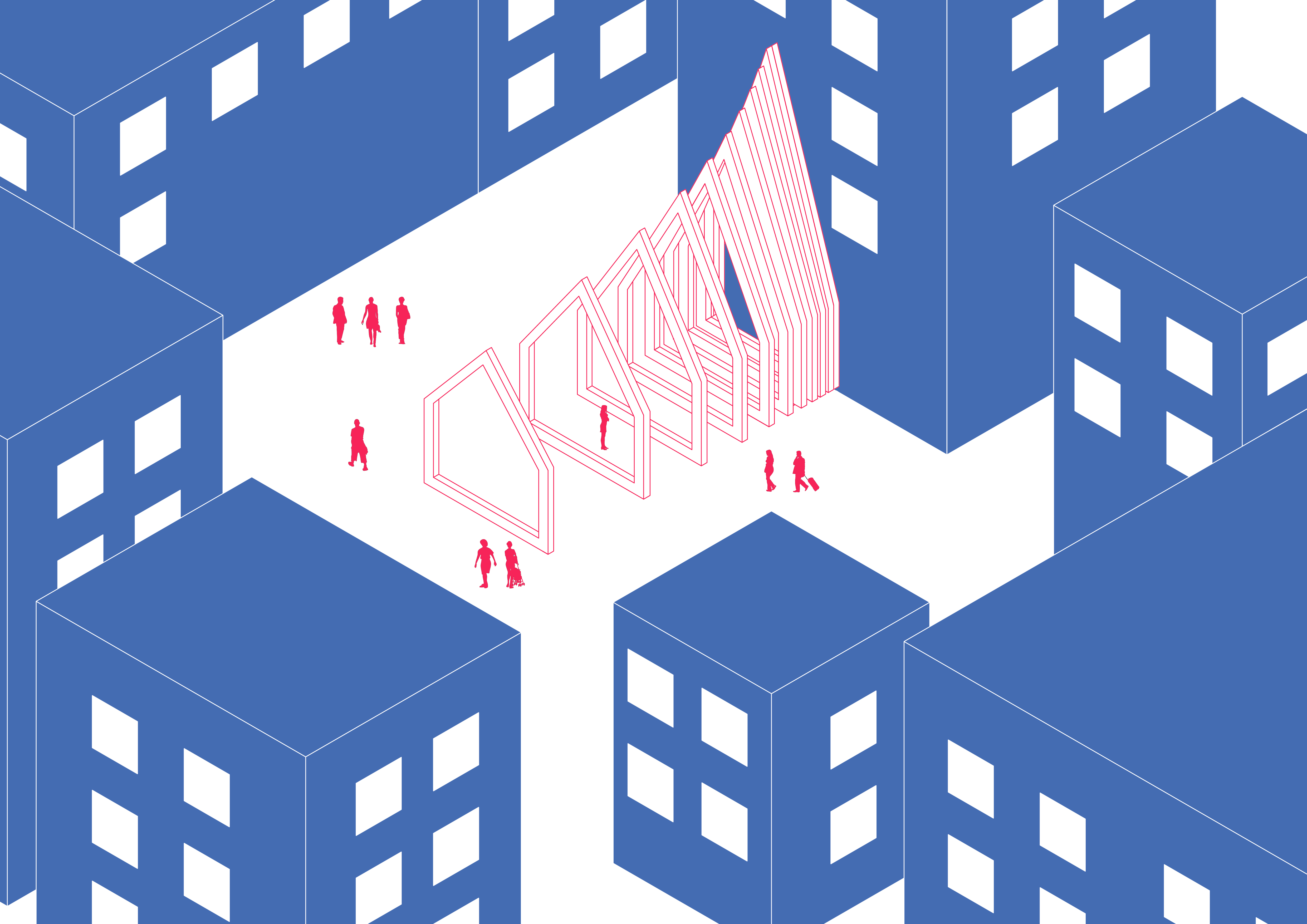author: Chloé Macary-Carney (Paris, France)
If you ever were to venture out to Yangon, the former capital city of Burma, you probably wouldn’t think to visit the district of Ahlone. And yet, if you did, in this neighborhood on the outer edges of the old grid-plan of the historic colonial city center, you would find something quite unique and quite unsurprising, at the same time.
You would find a market, almost completely empty but totally surrounded by the vendors who used to sell in it. You would find a story of the fight over power: local people vs. an insecure and corrupt government in search of economic development. A fight between those who occupy the public space and the entity that owns it.
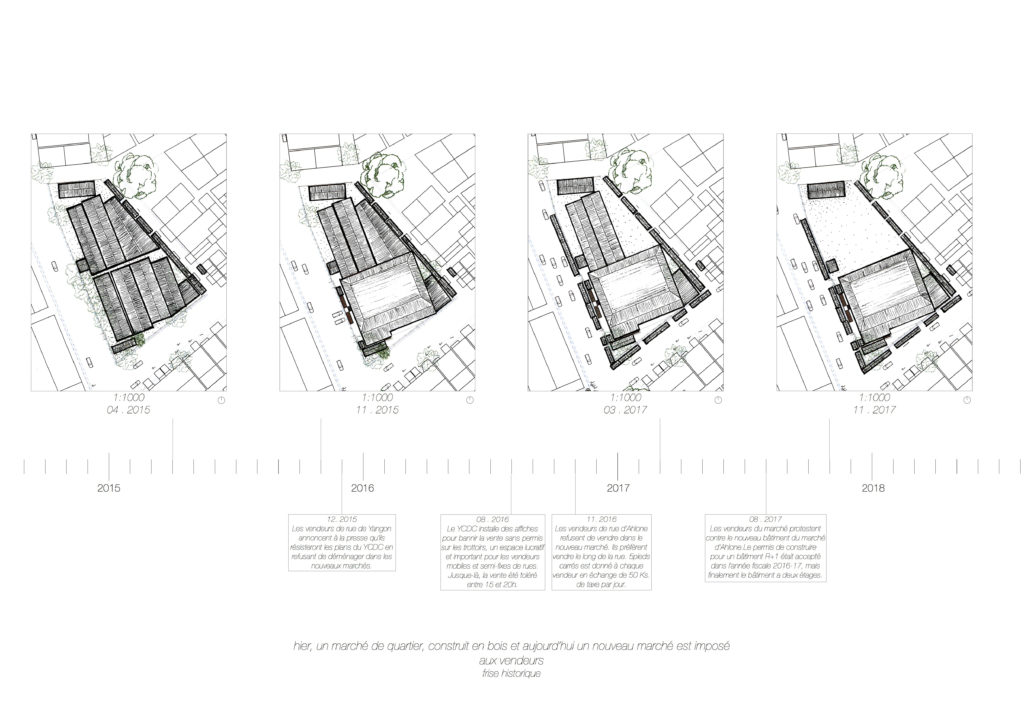
A brief and very recent history of the city’s project to “clean the streets”
We don’t know much about the history of Ahlone market. This history begins in April of 2015, date of the last satellite image of the original wooden market of Ahlone. The wooden market, with its cheap sheet metal roof, must have been like any other Burmese wooden market, full of people, smells, and sounds. Vendors, mostly women, probably sat on wooden platforms about 70 cm high, surrounded, if not submerged, by their products, probably chatting with friends and neighbors who also needed fresh goods, while waiting for clients. Children probably played while helping their parents serve clients small oily rice dishes. Rats, all the while avoiding stray cats and dogs, probably scurried around to grab what they could find between the feet of those sitting at the small pop-up restaurant stands (note: this is not in any way similar to the contemporary pop-up you are probably imagining; this is actually a restaurant that just appears and then goes away at the end of the day). Beside this market, street vendors, semi-fixed or mobile, would probably be selling fresh coconuts or small fried corn beignets on the streets.
According to one woman who lives today in the port area of Ahlone district, this market dates back to the 1940s and it had more than 220 stands. It was made up of nine wooden buildings and was the main market of Ahlone, on the corner of two streets, Nguwar Street, and one that crosses the whole district, named Thit Taw.
Around November 2015, half of this market was demolished. The Yangon City Development Committee (YCDC), basically the local government, decided to replace the market with a bigger metal building made of two levels topped off with a blue sheet metal roof. This is the new market now, or we can also call it the blue market, because of its blue roof and metal structure. The entrance of the building is no longer from the main street, Thit Taw, but now from the less commercial street on the side, Nguwar. This new blue market is the first building in YCDC’s project for Ahlone market. The project also plans to build a second building for meat and poultry, with three levels, also as a metal structure. The problem with these metal structures is simple: local climate. Yangon is a tropical climate city, and metal absorbs heat and does not breathe like wooden structures. On top of that, metal is also not at all easily found in Burma, whereas wood is cheaper and more easy to come by. The choice of materials may seem trivial to some, but this choice is very important. Western cities are not built of wood, they are built of brick, stone, and metal. But wood or even the more indigenous and less expensive bamboo? These materials are not considered noble, and are maybe not connoted with images of grandeur and development like metal, despite being more adapted to local climate. And so, metal it is – a metal structure and sheet metal roof, a cheap roofing option, but costly when it comes to comfort.
One month later, the street vendors of Yangon announced to the media that they plan to resist YCDC’s project by refusing to move into the new market, once it is completed. The city installed what were supposed to be temporary, wooden structures for the vendors to continue to sell from during the construction of the new buildings. These structures are installed all around the perimeter of the market site.
In August of 2016, YCDC installed posters on lampposts and trees, reminding the public of a law that bans selling produce on the sidewalk, the most lucrative and important space for mobile and semi-fixed vendors in a country where most people cannot afford to rent a proper shop or market stand. Until then, local law enforcement tolerated selling on the street between 3 to 8 o’clock. Just like the project for a new market in Ahlone, this decision is just one more initiative from the city to “clean the streets”. The YCDC sees these street vendors as the cause behind the big traffic jams, because vendors occupy street space since, most of the time, there aren’t any proper sidewalks. Where the street vendors sell, pedestrians are forced to walk on the street space used by cars and in the eyes of the YCDC, cars are a sign of modernity, of great development.
In November of 2016, the street vendors of Ahlone refuse to sell inside the blue market. They prefer to stay where they are, in their wooden stands along the street, where they are closer to pedestrians; this option is obviously much more lucrative for them. The vendors continue to meet the YCDC with more resistance because they are not being listened to. The YCDC built a market that was totally contrary to what the vendors actually needed. They built a market with multiple levels but with less stands for vendors, and for a more expensive rent fee: five square feet for each vendor, in exchange of 50 kyatt tax per day.
Despite the resistance, the project continued on. In March of 2017, one more of the original buildings is demolished and more temporary stands are installed along the site.
In August of 2017, the vendors protested in the streets, against the second new market building. The construction permit of the project allowed for a building with a ground floor and one level, but the YCDC was actually constructing a building with two additional floors. Despite the protests and the appearance in local media, the project continued on. In November of 2017, satellite images show that all buildings of the original market are finally demolished, besides two anecdotal annexed buildings, being the size of sheds.

A community in resistance
In February of 2018, the second building of YCDC’s project, this three level metal edifice, was still in construction. The blue market was complete and open but empty. Those who once had a stand in the now demolished market have a spot allotted to them in the new one, but not many have returned. Instead, vendors continue to resist the project by refusing to budge. Nevertheless, in a corner of the ground floor of the new blue market, a small cafeteria has appeared, installed on the unused vendor stands. A few pop-up restaurants use the stands as tables for their clients who come here for shade and food. They, mostly men, eat together and talk while children serve them dishes and tea. The air is heavy under the metal roof onto which the sun pounds, but at least there is shade under which one can sip a warm tea.
Upstairs, where the market was supposed to continue, there are only trash and empty boxes. Around midday the market takes a break while the sun is at its hottest, some vendors will then go upstairs and lay on the bare cement floor to take a nap between shifts. The second floor is of no interest to the vendors who need to stay as close as possible to pedestrians walking on the streets.
This resistance though seems to have created something else in the neighborhood; camaraderie. In all cities and towns, a market is a central point where life happens. In Ahlone, at the crossroads of Thit Taw and Nguwar, where the wooden market of Ahlone once stood, the neighborhood is constantly awake and animated. The street market creates a certain energy, you can feel how everyone seems to know one another. People passing stay a quick moment to say hi to vendors, children run in all directions, no one really pays them much attention but at the same time, everyone is watching over them. A baby, less than a year old, plays alone on a woven bamboo mat visibly not accompanied, but at the same time totally safe and protected by the eyes of this community. This is the definition of what Jane Jacobs would call “eyes on the street” (in The Death and Life of Great American Cities, New York, 1961.)
The temporality of the market dictates the rhythm of the neighborhood like its heartbeat. Between 6 and 11 o’clock in the morning, meat, poultry and fish are sold from the temporary stands on Nguwar Street. The vendors sit on their 70 cm tall wooden stands, in the middle of their piles of fresh fish or chunks of meat. People walk by or come up to the stand to buy. They are standing up but they are at the same height level as the vendor who sits on the stand. At this time of the day, the area is packed full of pedestrians. So full that they block the streets as the taxis honk relentlessly, trying to move even an inch. The bike-taxis pass through this mass of people and the jammed cars at a frightening speed, and the pedestrians do their grocery shopping, some with big packages on their heads or backs.
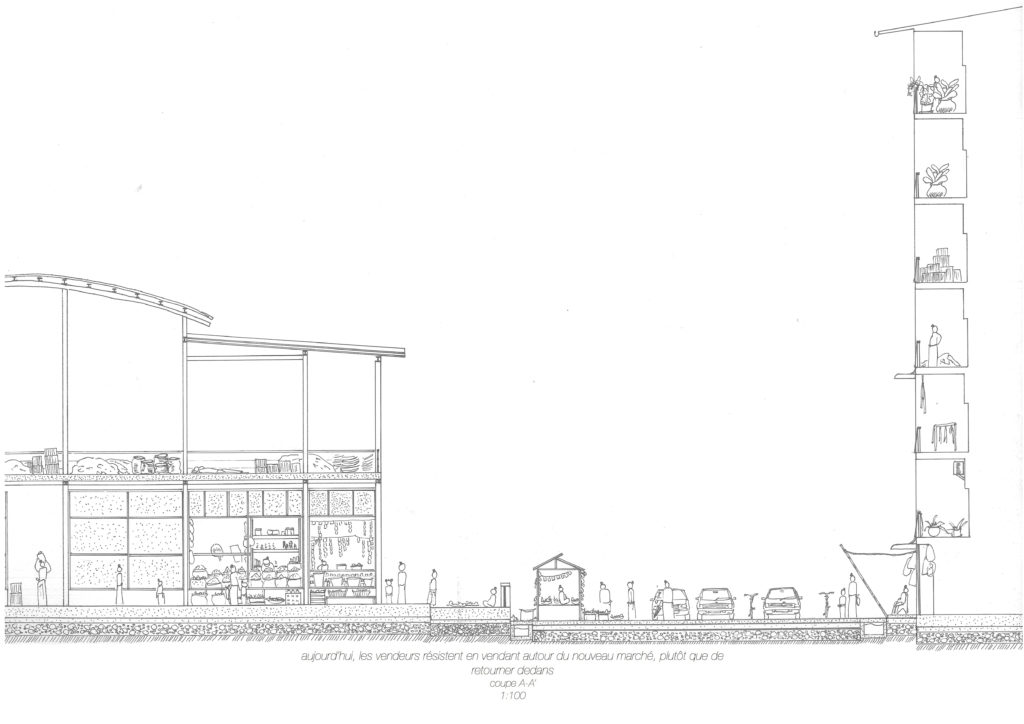
The fruit and vegetable merchants sell at the same time from their temporary stands on Thit Taw Street. These vendors also sit in the middle of their produce display, surrounded by a rainbow of salads, fruits, vegetables, spices… the list goes on. Bamboo baskets filled to the brim with even more colorful produce then take over the area around the wooden temporary stands. The stand deploys itself in such a way that the vendor doubles the space they initially had with the wooden stand. When one of the baskets is empty, they mechanically throw it behind them onto the pile of empty baskets and boxes.
After 9 o’clock in the morning, there are significantly less people in the streets and the cars can again flow through. Between 12 and 3 o’clock the sun is too hot – it’s break time. The meat and fish vendors have already hosed down their stands that now dry under the sun and all their knives and goods have been stocked and locked up in the wooden structure of their stand, which also doubles as a wooden locker. The vegetable and fruit merchants also close it up, get off the stand, put all the baskets on it and close the metal doors that lock everything up.
The construction of YCDC’s project seems to have turned the existing market inside out: everything happens around where it used to happen. Not only do vendors surround the construction site, but they occupy the other side of the street too. Across the street, under a big Bagnan, that cannot be demolished because it is Buddha’s sacred tree, a woman sells second-hand clothes, fruits and vegetables next to a man who fixes bikes and a woman who sells charcoal.
The tea merchant who took over a ground floor apartment on the other side of the street, converted it into a tea shop. He actually sets up his tea on the street, and uses the apartment just as a place to store the products. Many others do the same.
In the afternoon, the vegetable and fruit stands open up again for a few hours, some stay open until 9 or 10 o’clock at night. When they close up shop again, a group of men set up a few plastic chairs under the Buddha tree and watch the market from across the street. They stay here until dawn, when the meat market starts up again. They watch through the night, and protect this market, not the one recognized by the city, but the one recognized by the people.
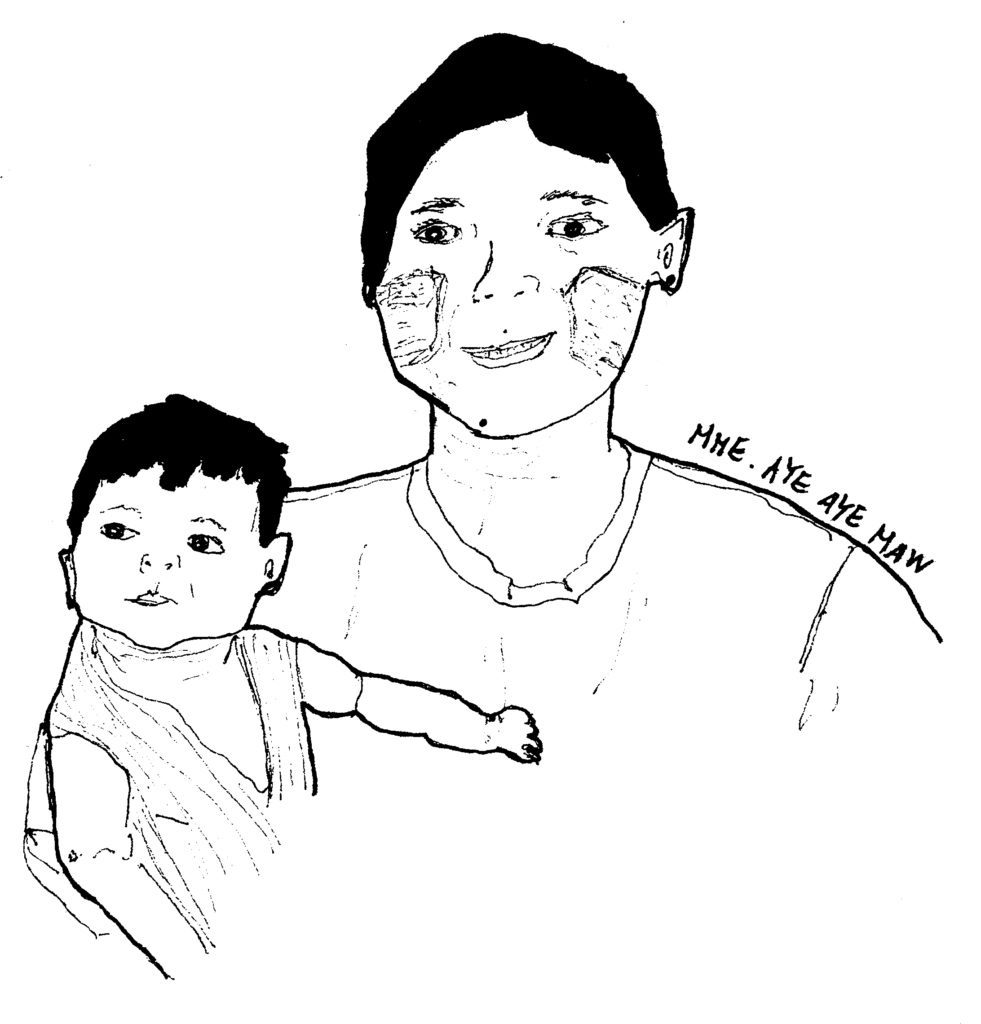
The arrow of time
What will happen next? That is the big question that, for now, is unanswered. I discovered this story when visiting Yangon for a site study in the framework of my architecture thesis. At that time, I stumbled upon an amazingly colorful and lively street corner in this neighborhood that I was discovering and trying to understand. Ahlone market is facing questions that were actually imposed upon the world, centuries ago, with the creation of colonies and the dream of a world economy. Ahlone market is a special place for these people, for me as well, who discovered it. Yet, this story isn’t so unique in how it illustrates a bigger problem many people are faced with today.
Countries who were colonized by Western nations are still developing according to a Western model that in a sense doesn’t really exist anymore. Instead of understanding and honoring their countries’ culture and the social and cultural constructions that already exist, that already have roots there, the local government and the national government in a wider sense, prefer to demolish and build again, according to their image of what a developed city, country and life, in general, should be.
Bruno Latour is definitely more qualified and well-versed for explaining these ideas, which he does in his book Ou atterrir?.
“For two centuries, the arrow of time has allowed us to define on one side those going forward – modernizers, progressives – and on the other those who stay behind. (…) To the war cry ‘modernize yourselves!’, there is no other content than this: any resistance to the modernization will immediately be struck with illegitimacy. (…) Those who take shelter on the other side of the irreversible front of modernization will be disqualified in advance.”
“Refusing modernization is perhaps a fear reflex, a lack of ambition, a native laziness, yes, but, as Karl Polanyi has very well said, society is always right to defend against attacks. To refuse modernization is also to resist courageously by refusing to barter one’s province for another – Wall Street, Peking or Brussels – even more narrow and especially infinite and far away and consequently, much more indifferent to local interests.”
Because we are in a post-colonial time, and because people are resisting and fighting the powers that are, this story remains open-ended for now.

